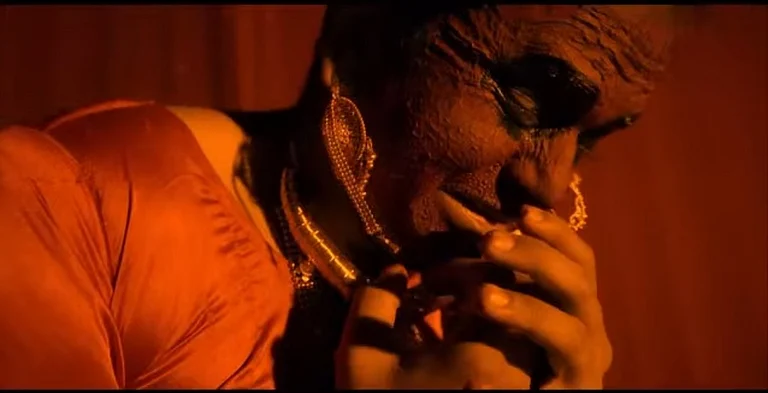Nidhi Saxena’s Sad Letters of an Imaginary Woman draws on the suggestive to craft its whisper-like tale. The middle-aged Nidhi (Anamika Tiwari) lives in her decrepit home with her mother Meera (Bhadra Basu). We don’t venture outside the confines of the house until its very last shot. What unravels is the story of a lifetime, told through anecdotes and episodes we eavesdrop on. In the shared space of a house barely held together, there’s friction and emotional distance between the mother and daughter. “Restless fragments of memory”—as a letter written by Nidhi in the present to her own past mentions—drift all around.
Saxena creates a richly interpretive space. She allows our minds to wander, forage through the ellipsis and carve out a tale of a life spent. Much of this is relayed through sound. One of the earliest scenes features the Nidhi in the film probing the walls and corners with a boom mic. The house is all but hollowed out. What have others said about her? She remarks no one ever liked her. Elsewhere, she talks about having a “vacuum of nothingness” inside her. The mother wonders, “Was my love ever enough for anyone?”

This is a hushed film. But there are voices and stories keening to leap out of the cracks in the house’s papery walls. Associations and implications open up. The house has been a silent witness to grudges, resentments and old wounds in the family. Saxena locks the internal and external in dialogue. Emotional as well as physical spaces in the film are shattered. There’s no retrieving, just flickering snapshots strung from an expanse of time. Temporality itself turns loose, ungraspable, with no rigid boundaries.
To enter the film is to inhabit a free-floating world. Memory and trauma are inextricably bound together. The daughter, who spites her mother, becomes almost a mirror image of the latter at times. A history of hurt and repressed desire runs underneath the mute friction between the two women. Has one forgiven the other for snipping out a possibility of furtive happiness? Nidhi’s mother scraped through an unhappy marriage with a husband who was barely around. A voice from the past describes Meera as “always irritated”. She stuck within the bounds of the unfulfilling marriage, which slowly squeezed life and hope out of her.
Saxena spins a miasma within the co-dependency joining the two women. They blur into each other, patterns of despair reverberating. To echo the intertitles punctuating the fragments, the past hangs on. Stasis coats circumstances of both mother and daughter. The fatigue of living is writ heavy on their selves. They are almost like ghosts, lightly occupying a space that never gathered the safety and comfort of home. The air around them, however, is heavy and thick with the unsaid.
Sad Letters of an Imaginary Woman breathes and thrives in connotations. It sighs into submission of a life spent, which has been full of unrequited dreams and passions given short shrift.
Sad Letters of an Imaginary Woman screened at the Dharamshala International Film Festival (DIFF) 2024.

















